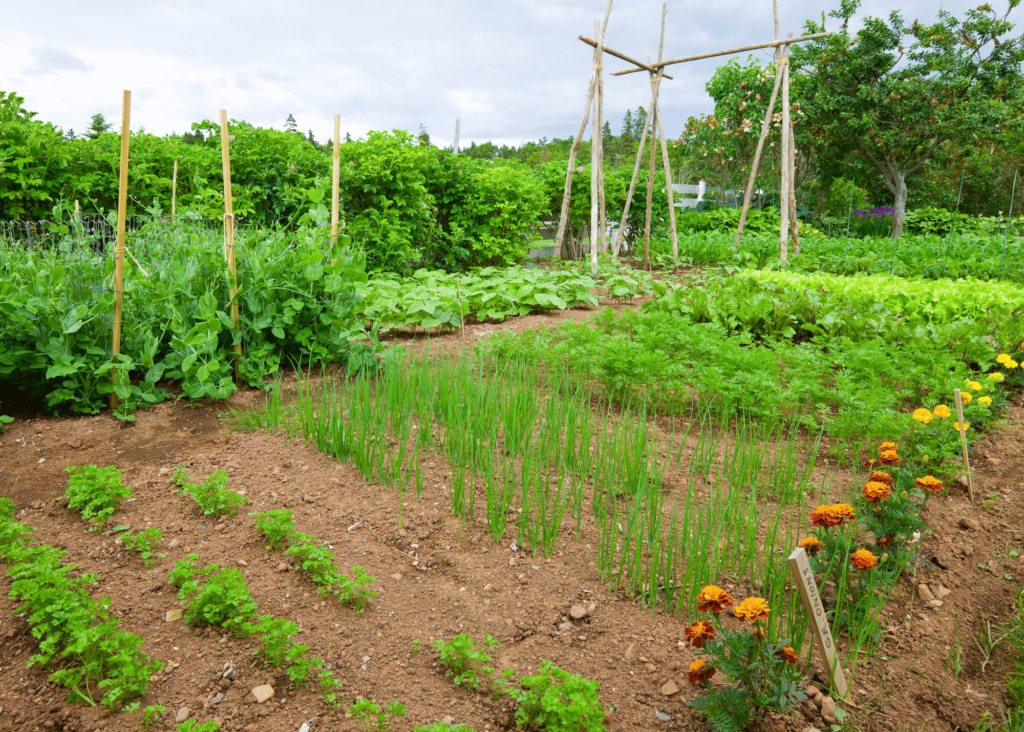
Food Forests: Grow Your Own Food, Enhance Your Preparedness
Cynthia KolfWe're excited to embark on a journey exploring the world of food forests!
This post serves as the foundation, and in the coming months, we'll look deeper into specific aspects like companion planting strategies, maximizing yield in small spaces, and even food forest resilience during emergencies. So, stay tuned for a series of articles help you cultivate your own food forest.

Living in Florida, I'm constantly surrounded by sunshine, which makes gardening a natural passion.
Lately, I've been fascinated by the concept of food forests. Florida's warm climate and long growing season create the perfect environment to explore these sustainable ecosystems that produce their own food.
The good news? Food forests aren't limited to Florida – they can flourish in many regions! Throughout this blog series, I'll share my personal experience building a food forest here in Florida, while also providing tips and resources that can be adapted by gardeners anywhere in the country.
So, whether you're a fellow Floridian or live in a different climate altogether, get ready to learn about the exciting world of growing your own food in a sustainable and eco-friendly way!
Benefits for Everyone
Year-Round Harvest
Food forests are designed for continuous production. By incorporating plants with varying fruiting and ripening times, you'll have a steady supply of fresh food throughout the year.

Sustainable Abundance
These gardens are self-sustaining ecosystems requiring minimal effort. Once established, they need little watering, weeding, or pest control – a dream for busy gardeners and a boon for those focused on self-reliance.
Biodiversity Powerhouse
Food forests attract beneficial insects and pollinators, naturally boosting plant health and reducing reliance on pesticides. They also provide vital habitat for birds and other wildlife, creating a thriving mini-ecosystem in your backyard.
Increased Food Security
For preppers, food forests offer a significant advantage. You'll have a reliable source of fresh, nutritious food readily available – a crucial element in any emergency preparedness plan.
Planning Your Food Forest
Assess Your Space
Sunlight, water drainage, and soil quality are key factors. Consider potential disruptions during hurricanes or other emergencies – will your plants be adequately protected?

Choose Your Plants Wisely
Opt for native or well-adapted Florida varieties known for resilience and minimal maintenance.
Diversity is Key
Select plants with varying heights and root structures for a productive and balanced ecosystem.Think long-term – avoid overcrowding with trees that may eventually shade out other plants.
Planting and Maintaining Your Food Forest
Raised beds or direct ground planting are both viable options. Amend your soil with organic matter to enhance drainage and fertility.
Initial care involves regular watering, especially during dry spells, and occasional weeding until your plants are established.
Over time, your food forest matures, requiring progressively less maintenance.

Resources for Success
- Florida Friendly Landscaping Guide: [https://ffl.ifas.ufl.edu/] (Provides information on suitable Florida plants)
- Permaculture Research Institute: [https://www.permaculturenews.org/] (Offers guidance on creating resilient and sustainable gardens)
- Florida Native Plant Society: [https://www.fnps.org/] (Helps you select native plants that thrive in your area)
By establishing a Florida food forest, you're not just creating a beautiful garden – you're investing in your future. It provides fresh, healthy food for everyday enjoyment and acts as a valuable resource for those seeking greater self-sufficiency and emergency preparedness.
